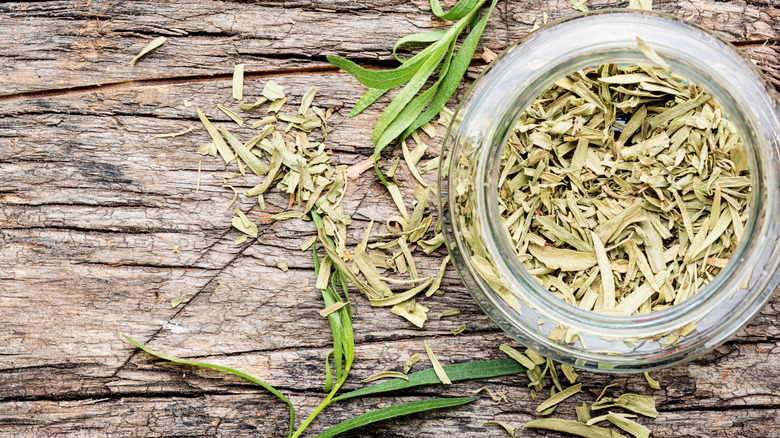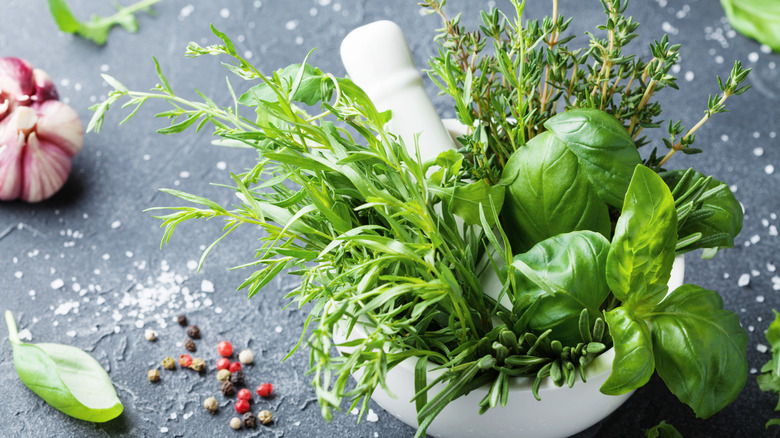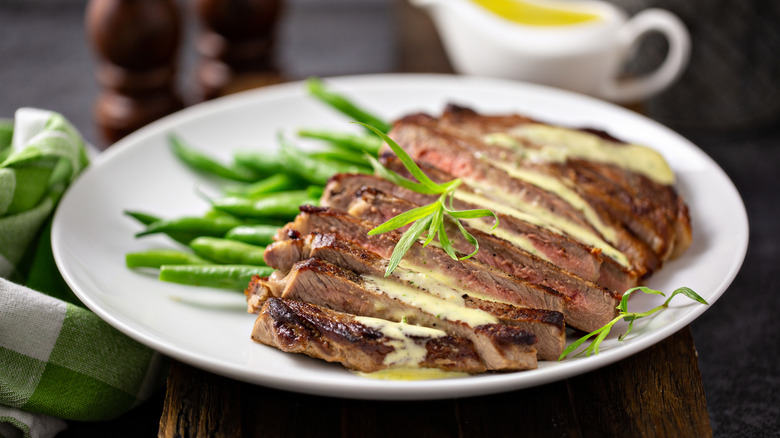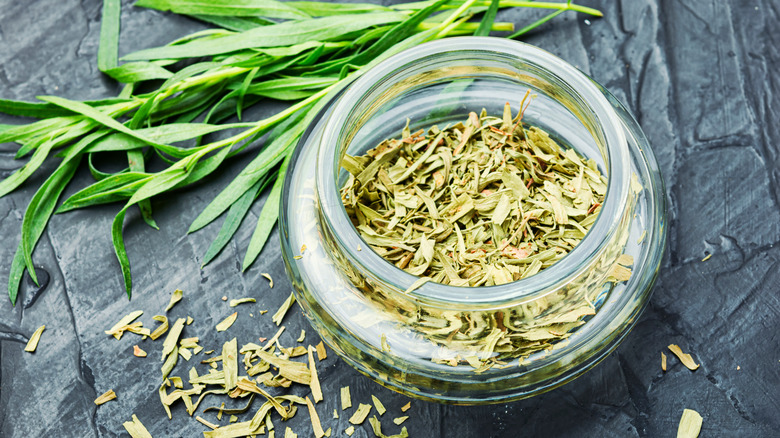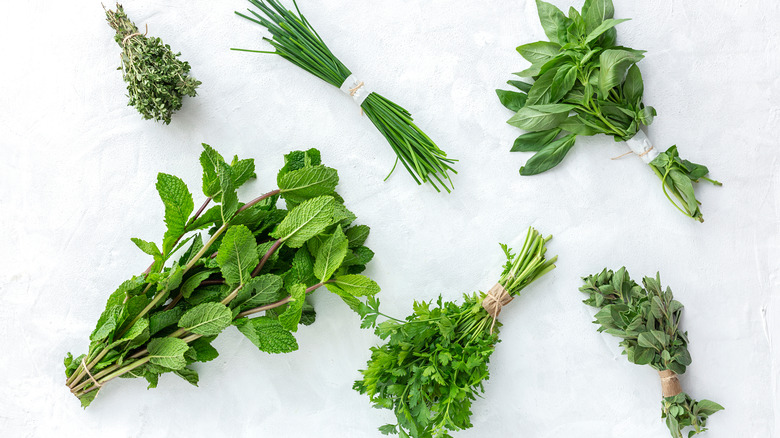What Is Tarragon And How Do You Use It?
Tarragon — also known as Artemisia dracunculus in the science world — tastes and smells just as pretty as it sounds. While it could be mistaken for the name of a dragon from "Game of Thrones," it's actually a useful herb that shows up in many different dishes. Usually known as French tarragon, there are Mexican and Russian tarragon varieties as well.
It is not that common for tarragon to be found in most American kitchens, says The Kitchen Magpie, but there are other places around the world that adore incorporating this herb in a culinary sense. The use of tarragon is popular throughout Europe and Russia, with many cuisines benefitting from having it nearby. The herb is from the sunflower family and the biggest producer of sunflowers in the entire world is Ukraine, so it's no wonder this relative is also popular (via Britannica).
The distinct herb has three different varieties that are all used for incredibly different reasons. As you may have guessed, this herb is not only used for spicing up food, but medicines as well.
What is tarragon?
Tarragon is a leafy, flavor-packed herb that grows wild all over the world. But even so, if you live in the U.S. you may not be as familiar with it as home cooks and chefs who live across the Atlantic. You often will find that tarragon comes in a state similar to cilantro, with leaves and stems still attached.
In America, chives, rosemary, and parsley are used the same way you would use tarragon. The difference with tarragon is that there are three distinct varieties of it that are all used for various purposes.
The most common variety found in cooking is known as French tarragon, which is most likely what you'd want to ask for when buying it at the grocery store. Russian tarragon can also be used for cooking, but it is known more for its aromatic qualities rather than its flavor. Lastly, Mexican tarragon is what you would want when making folk medicines (via The Kitchen Magpie).
French tarragon tends to be smoother, darker, and more pungent than the others. It has the "purest flavor" making it the best for cooking, according to Horticulture Update. Russian tarragon is said to be more robust and less flavorful, and Mexican tarragon has a strong anise flavor, which is why the former is the preferred verison. But even if you're out of French tarragon, either of the other two will work as a great replacement if needed.
What does tarragon taste like?
The flavor of tarragon is loved so much in French cuisine that it has become one of the four all-important French fine herbs. These kinds of herbs are commonly used to season simple yet delicate dishes such as chicken, fish, and even eggs.
The taste has been compared to biting into a licorice root, but far more subtle. It brings a soft spicy note and can smell similar to star anise. It can also taste of citrus and soft green herbs. However, it can be an incredibly intense flavor, so it is best to use it with more delicate meals, like chicken.
Tarragon can even taste minty, or similar to vanilla, eucalyptus, and pepper. That being said, its variety of flavor lends itself well to many meals and will bring out an elegant aroma bound to enhance any evening.
How do you use it?
To use tarragon, you have to know the differences between fresh and dried. If it is fresh, you must be sure to rinse off the leaves and dry them before cutting off the leaves. It is pretty easy to do this, just simply run your hands down the stem. You can use the leaves whole or chop them up.
When it comes to dried tarragon, it is mostly added into recipes in the beginning, like you would with Italian seasoning. It is safe to say the flavor will not be nearly as intense or have the same effect as cooking with fresh tarragon.
The best way to cook with tarragon is to use fresh and towards the end of the cooking process. While it tastes completely different from chives or parsley, its usage as a topping or garnish on a dish is similar. Some popular dishes that involve tarragon are creamy tarragon sauce that can be topped on chicken and fish, or a Béarnaise sauce, which is a Hollandaise sauce, but with tarragon. It's also great for incorporating in sauces and condiments like aioli.
Cooking isn't the only thing tarragon can be used for, though. As eMedicineHealth reports, tarragon is used in medicines that can help with digestion, sleeping, toothaches, and menstruation.
Can you substitute tarragon?
Tarragon is a uniquely flavored herb that isn't super easy to replace. Even so, there are still some options for substitutes in the U.S. for those who want to add a similar spice to their dishes, but can't find it in-store. Whether you need fresh or dry, there is luckily no shortage of choices for replacing it.
The number one option for replacing fresh tarragon would be the classic tried and true, basil. Its bright green color and similar hints of licorice and anise make it a great replacement if you can't get your hands on tarragon. Fennel seeds are another top-notch choice when cooking because it mimics the same flavors as tarragon.
Dried tarragon can also be substituted. By using the same parts dill, dried basil, or marjoram, you can bring comparable herbal aromas and flavors to your dish, but they won't taste exactly the same.
